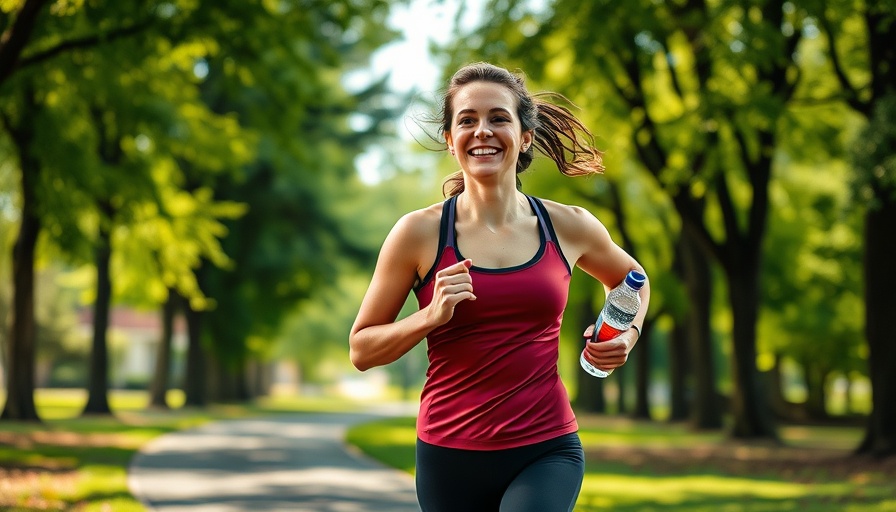
Is 30 Minutes of Cardio Enough for Weight Loss?
When it comes to the quest for losing weight, cardio exercises such as running, cycling, and walking often take center stage. Many fitness enthusiasts frequently ask: is committing just 30 minutes a day to cardio enough to effectively shed pounds? While the initial answer may seem simple, the complexities of individual fitness levels, workout intensity, and personal goals play a crucial role in determining the effectiveness of this approach.
Understanding Cardio: More Than Just Burning Calories
Cardiovascular exercise, often simply referred to as cardio, plays a significant role not only in weight loss but also in improving heart and lung health. According to fitness expert Abhi Singh Thakur, incorporating cardio into your routine enables your body to utilize oxygen more effectively during physical activity. While hedging towards weight loss, it becomes essential to acknowledge that cardio is more than merely burning calories; it’s about enhancing overall well-being.
The Role of Intensity in Weight Loss
One of the critical factors in determining how effective 30 minutes of cardio is for weight loss hinges on workout intensity. When your heart rate rises above 120 beats per minute, your body starts burning stored energy derived from glycogen and body fat. Thakur emphasizes that higher intensity workouts lead to burning more calories and accessing fat faster. This means that integrating short bursts of higher intensity workouts, such as sprinting during a run or increasing resistance on a bike, can yield better results even within a 30-minute timeframe.
Demystifying the Calorie Deficit
The concept of a calorie deficit is crucial in any weight-loss journey. In simple terms, a calorie deficit exists when the number of calories consumed is less than the number of calories burned. It’s important to note that engaging in 30 minutes of cardio can help create this deficit, but it's essential to maintain consistency. Factors like age, sex, and overall fitness play significant roles in how calories are consumed and burned. For example, older individuals may burn calories at a slower rate due to a decline in metabolism. Likewise, men, due to physiological differences, may lose weight more rapidly than women.
Consistency is Key
Experts agree that even 30 minutes of daily cardio can be effective for weight loss, provided it is paired with consistency and balanced nutrition. Adopting a sustainable approach that blends cardio with strength training and mindful eating usually results in better long-term outcomes. Incorporating light strength sessions could aid in preserving muscle mass, ensuring that while fat is lost, muscle remains intact, enhancing overall body composition.
Emotional and Psychological Benefits of Cardio
Beyond physical transformation, regular cardio activities significantly impact mental health. Engaging in a 30-minute cardio session can boost mood, relieve stress, and provide a sense of accomplishment. These psychological benefits are crucial as they can help create a positive cycle, motivating individuals to maintain their fitness routines over time. Cardio exercises can also provide essential social connections, contributing to mental well-being and bolstering motivation by surrounding oneself with like-minded individuals striving towards similar fitness goals.
Incorporating Cardio into Your Daily Routine
For those who lead busy lives or are just beginning their fitness journeys, adopting practical and straightforward cardio routines can be a game-changer. Simple activities like brisk walking during lunch breaks or cycling to work are manageable ways to integrate fitness into a hectic schedule. High-energy workouts, like dancing or interactive group sessions, can make exercise enjoyable. The beauty of cardio is that it can easily fit into various lifestyles while bolstering fitness and health.
Final Thoughts: A Holistic Approach to Fitness
Ultimately, incorporating 30 minutes of cardio into your daily routine can be a beneficial component of a weight loss strategy. Whether your goal is to drop pounds, maintain fitness, or simply gain more energy, consistency and a well-rounded approach will lead to success. Balancing cardio workouts with strength training and mindful nutrition ensures not just body transformation, but an overall healthier lifestyle.
If you're ready to enhance your fitness journey and dive deeper into effective cardio routines, remember that every bit counts when aiming for a healthier you. Consistency, positivity, and connection with others can make all the difference in maintaining your journey to better health.
 Add Row
Add Row  Add
Add 




Write A Comment